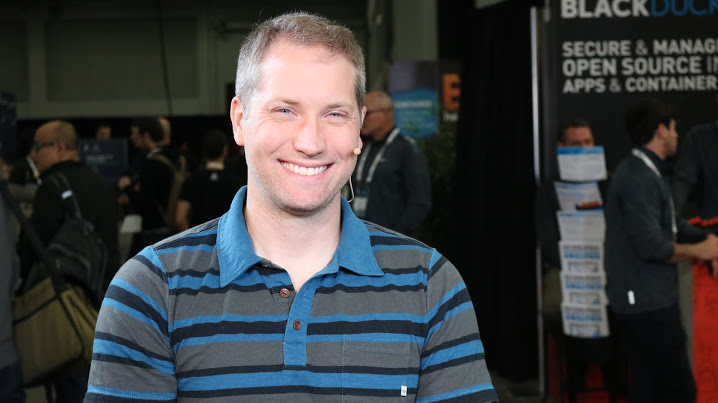 CLOUD
CLOUD
 CLOUD
CLOUD
 CLOUD
CLOUD
The rich complexity of Kubernetes’ open-source system for managing containers (a virtualized method for running distributed applications) attracts diverse users and contributors alike. Everyone from public cloud providers to small startups to enterprise users has their hands in it; can they collaborate to control the chaos and bring standards to the maturing technology?
The range of ways companies use Kubernetes is so varied that there must remain a wide selection of choices, according to Clayton Coleman (pictured), architect of containerized application infrastructure at Red Hat Inc. “It takes a spectrum,” he said.
Clayton spoke with Stu Miniman (@stu), host of theCUBE, SiliconANGLE Media’s mobile livestreaming studio, and guest host Matt Broberg (@mbbroberg) during an interview at KubeCon + CloudNativeCon in Austin, Texas.
At the all-in end of that spectrum, there are companies deploying microservices-based production applications on public cloud. At the opposite end, there are giant corporations with decades-old legacy techn using Kubernetes piecemeal in a larger system.
“This is where an ecosystem really comes into play,” Coleman stated.
The Kubernetes ecosystem traces the arc of users with different delivery models. First and foremost, Kubernetes is a free, open-source technology. Increasingly, public clouds like Amazon Web Services Inc. are integrating Kubernetes into their infrastructure as a service. Red Hat entered the fray with its signature packaging of open-source technology in the form or OpenShift — its distribution of Kubernetes using Docker containers. The idea of a distribution — curating and making some choices about how an open-source technology should be used — is Red Hat’s wheelhouse.
“We’ve actually started to really apply the distribution mindset to Kubernetes,” Coleman said.
Kubernetes is part of the Cloud Native Computing Foundation. The number of CNCF projects has grown from four to 14 over the last year. No project or company will dominate open source; likewise, Kubernetes will not dominate the CNCF, Coleman stated. However, “I would expect to see an effort at thinking about Kubernetes as the core, the kernel if you will,” he added.
Around the Kubernetes core, other CNCF technologies will ideally coalesce around some best practices, according to Coleman. For instance, standards around security in Kubernetes and containers and other issues need addressing.
“We all kind of need to work together to make those standard solutions happen,” Coleman said. To that end, there is the CNCF conformance profile for Kubernetes. “It’s a new effort that intends to take the tests that we use in Kubernetes to make sure that it’s working correctly and use that to say, ‘This is something that you can rely on every Kubernetes distribution also supporting,” Coleman concluded.
Watch the complete video interview below, and be sure to check out more of SiliconANGLE’s and theCUBE’s coverage of the KubeCon + CloudNativeCon event. (* Disclosure: Red Hat Inc. sponsored this segment of theCUBE. Neither Red Hat nor other sponsors have editorial control over content on theCUBE or SiliconANGLE.)
THANK YOU